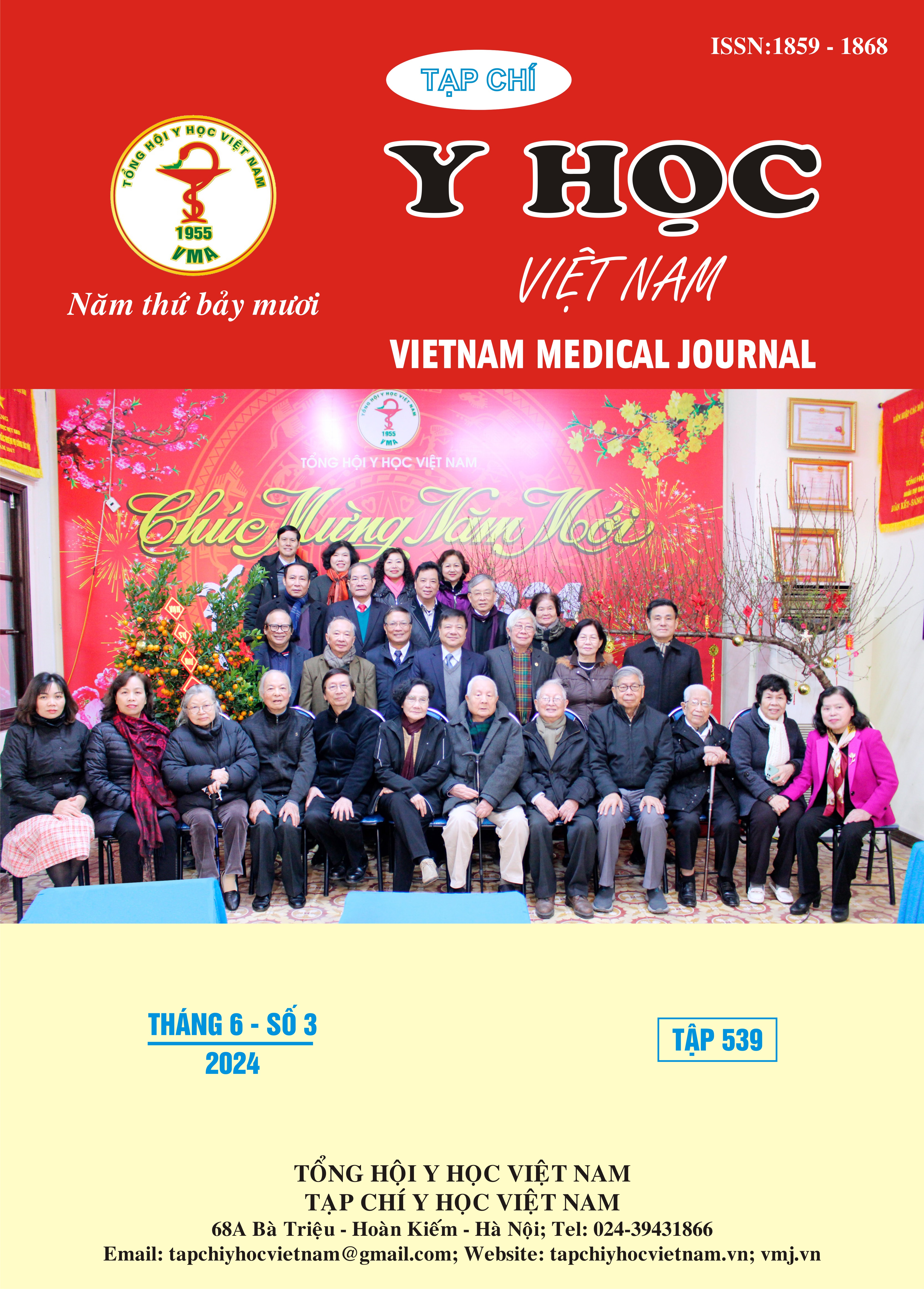TƯƠNG QUAN GIỮA CHỈ SỐ ĐÁNH GIÁ CHẤT LƯỢNG CUỘC SỐNG INFANTS’ DERMATITIS QUALITY OF LIFE INDEX (IDQOL) CHO TRẺ TỪ 0-4 TUỔI VỚI ĐỘ NẶNG CỦA BỆNH THEO PHÂN ĐỘ THE SCORING ATOPIC DERMATITIS (SCORAD) TRÊN TRẺ EM MẮC VIÊM DA CƠ ĐỊA
Nội dung chính của bài viết
Tóm tắt
Mục tiêu: Xác định mối tương quan giữa chỉ số đánh giá chất lượng cuộc sống Infants’ Dermatitis Quality of Life Index (IDQOL) cho trẻ từ 0-4 tuổi với độ nặng của bệnh được đánh giá theo phân độ The Scoring Atopic Dermatitis (SCORAD) trên trẻ em mắc viêm da cơ địa. Đối tượng và phương pháp nghiên cứu: Nghiên cứu cắt ngang mô tả trên 284 trẻ từ 0-4 tuổi mắc viêm da cơ địa tại bệnh viện Nhi đồng 1, bệnh viện Nhi đồng 2 và bệnh viện Nhi đồng Thành phố. Kết quả: Điểm IDQOL trung vị là 7 (khoảng tứ phân vị 5-9), 59,9% trẻ từ 0-4 tuổi bị ảnh hưởng chất lượng cuộc sống trong đó 10,9% trẻ bị ảnh hưởng chất lượng cuộc sống mức độ nặng. Điểm SCORAD trung vị là 35 (khoảng tứ phân vị 27,5-42). Điểm IDQOL và điểm SCORAD tương quan thuận (r=0,6033), mức độ trung bình và có ý nghĩa thống kê (p<0,001). Kết luận: Có mối tương quan giữa mức độ nặng của bệnh và chất lượng cuộc sống của trẻ em mắc viêm da cơ địa từ 0-4 tuổi. Cần sử dụng chỉ số IDQOL và phân độ nặng theo SCORAD hiệu quả góp phần đánh giá toàn diện trẻ từ 0-4 tuổi mắc viêm da cơ địa.
Chi tiết bài viết
Từ khóa
IDQOL, SCORAD, viêm da cơ địa
Tài liệu tham khảo
2. Lewis-Jones MS, Finlay AY, Dykes PJ. The Infants' Dermatitis Quality of Life Index. The British journal of dermatology. Jan 2001; 144(1): 104-10. doi:10.1046/j.1365-2133.2001. 03960.x.
3. Chinn DJ, Poyner T, Sibley G. Randomized controlled trial of a single dermatology nurse consultation in primary care on the quality of life of children with atopic eczema. The British journal of dermatology. Mar 2002;146(3):432-9. doi:10.1046/j.1365-2133.2002.04603.x.
4. Beattie PE, Lewis-Jones MS. An audit of the impact of a consultation with a paediatric dermatology team on quality of life in infants with atopic eczema and their families: further validation of the Infants' Dermatitis Quality of Life Index and Dermatitis Family Impact score. The British journal of dermatology. Dec 2006;155(6): 1249-55. doi:10.1111/j.1365-2133.2006.07525.x.
5. Gånemo A, Svensson A, Lindberg M, Wahlgren CF. Quality of life in Swedish children with eczema. Acta dermato-venereologica. 2007;87(4):345-9. doi:10.2340/00015555-0245.
6. Kim DH, Li K, Seo SJ, et al. Quality of life and disease severity are correlated in patients with atopic dermatitis. Journal of Korean medical science. Nov 2012;27(11):1327-32. doi:10.3346/ jkms.2012.27.11.1327
7. Maksimovic N, Zaric M, Reljic V, Nikolic M, Gazibara T. Factors associated with improvement of quality of life among parents of children with atopic dermatitis: 1-year prospective cohort study. Journal of the European Academy of Dermatology and Venereology: JEADV. Feb 2020; 34(2):325-332. doi:10.1111/jdv.15939.
8. Hanifin JM RG. Diagnostic features of atopic dermatitis. Acta Derm Venereol (Suppl). 1980;92:44-47.
9. Severity scoring of atopic dermatitis: the SCORAD index. Consensus Report of the European Task Force on Atopic Dermatitis. Dermatology (Basel, Switzerland). 1993;186(1): 23-31. doi:10.1159/000247298.
10. Krejci-Manwaring J, McCarty MA, Camacho F, et al. Adherence with topical treatment is poor compared with adherence with oral agents: implications for effective clinical use of topical agents. Journal of the American Academy of Dermatology. May 2006;54(5 Suppl):S235-6. doi:10.1016/j.jaad.2005.10.060.


